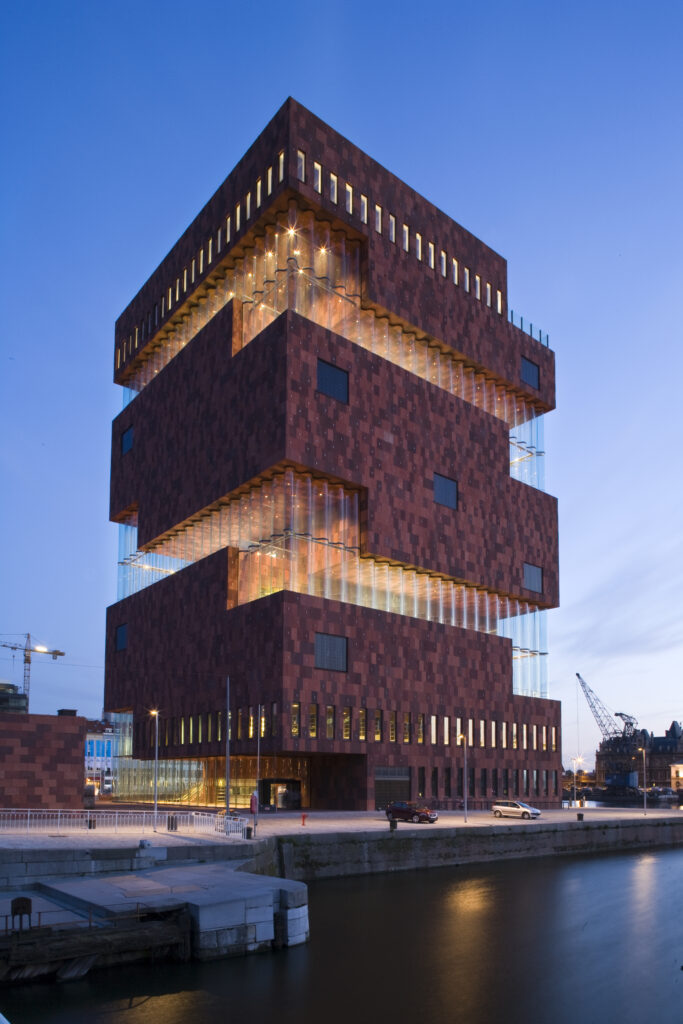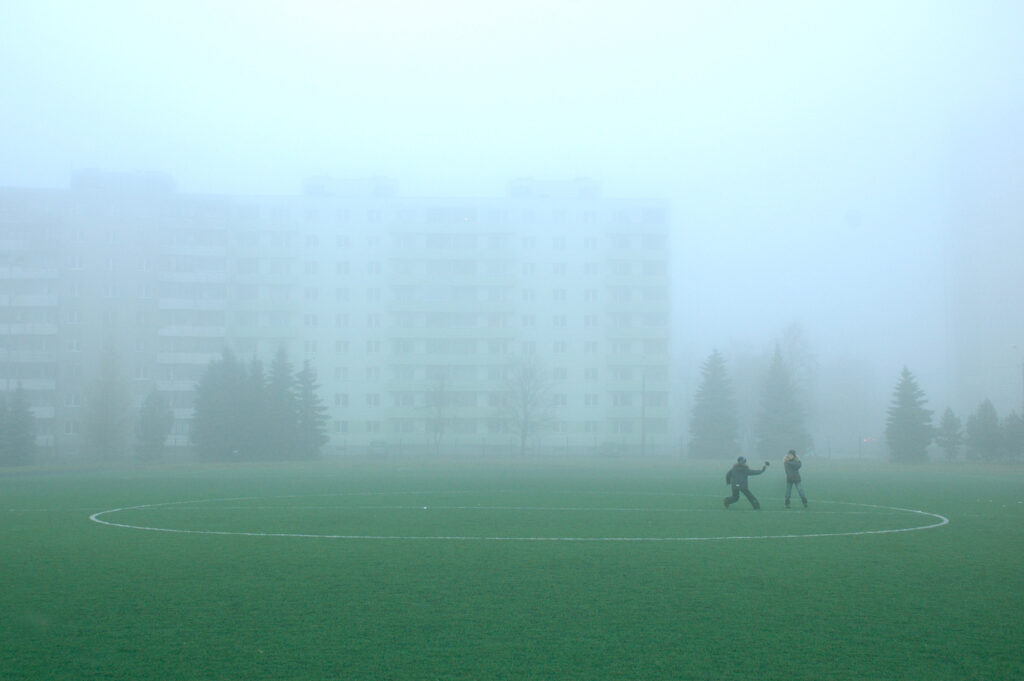How to deal with the ‘density’ of emptiness? Detroit’s urban area is twice that of Tallinn. Its number of inhabitants is 50% larger than that of Tallinn. Detroit’s population density is approximately 1840 people per square km while in Tallinn and in Tartu it is 50% more (about 2700 per square km). In many ways, Detroit’s population density is actually comparable to Estonia’s smaller towns – in Rakvere, for instance, the population density is 1400 people per square km. Yet the population density of Narva or Kohtla-Järve is almost one third of that of Detroit – approximately 690 people per square km. Are there any solutions in sight for Detroit, cradle for the US automobile industry, today a majestic urban failure? “As Detroit Flounders, Its Art Scene Flourishes,” says a headline in the New York Times. Can arts propel economic development in Detroit, as it has to, for example, in Bilbao, Spain?

“… is a city made only of exceptions, exclusions, incongruities, contradictions. If such a city is the most improbable, by reducing the number of abnormal elements, we increase the probability that the city really exists.” Invisible Cities, Italo Calvino, 1972
In his book Invisible Cities, Italo Calvino has collected different examples of ideal cities but it is through the voice of his travel partner, Marco Polo, that he defines what the ideal city is not. Contradictions, exceptions and foreclosures are what makes a real city – say Detroit, for example. Detroit is a city mostly distinguished by the presence of empty spaces and vacant buildings – characteristics not just to be analyzed but to become strong starting points for the definition of new urban spaces of the American city.
Shrinking city?
Oswald Mathias Ungers, in collaboration with Rem Koolhaas and other co-authors, published research on postwar Berlin in 1977 that presented a manifesto on the shrinking city, and described a model of a city in parts. A city cannot be intentionally reduced in size because of political and ethical reasons, hence it is more practical to treat it as a series of urban islands according to their density. These urban islands are small areas of relatively high population density and identified by important formal and urban elements. These spaces, in contrast to the vacant areas between them, are what is called a green archipelago.
Detroit as a shrinking city can be thought of the same way, since it is defined by the alteration of occupancy and vacancy that divides it into separate areas. The density is the subject of the composition of the city, changed in meaning. If the history of architecture is mostly about the density of the built environment and the growth of cities, then the present condition of architecture (especially considering the economic situation in North America) may just be about the opposite: the ‘density’ of the emptiness. Consider the fact that 40% of lots in Detroit are vacant (1).
Ruins of the automobile era

German architect Erich Mendelsohn, when visiting Detroit in the 1920s, was astonished at the congestion of the city, the urban density, the power of the industry, and the automobile era that brought the city to the international scene. Almost one hundred years later we are dealing with the ruins of that society. One of the most urgent issues is the lack of control and the impossibility to manage the abandoned lots. One solution may result from the analysis of the urban design. Downtown Detroit was born from a baroque radial plan by Augustus Woodward in 1805. Thanks to this radial organization of the streets, this part of the city seems to be dense and congested. The Woodward plan, suggested for the whole city, was abandoned pretty quickly and the city planners proceeded with a traditional grid plan, following the ribbon farms (long-lot farms, or just long lots) from the French settlement. This grid system was efficient for quick subdivision of lots, in order to sell them, but today the repetitive pattern is occupied by a new kind of settlement: the void.
Vocabulary for the living
It is now fundamental to define a cataloguing language for the systems that (de)compose such a city, considering every factor, starting precisely with the foreclosures and the exceptions that characterize the city. To define a new – temporary or continuous – identity of the urban environment of Detroit, we must first identify the islands, the signs and the events.
All these elements become the activators of the new urban generation: downtown with its Art Deco skyscrapers; midtown with the Detroit Institute of Arts and the Detroit Public Library from the early 20th century City Beautiful Movement; Eastern Market with the industrial warehouses of the late 19th century; Lafayette Park with the towers of Mies Van De Rohe; Belle Isle designed by Olmstead; Corktown, the city’s oldest neighborhood with the ghostly Michigan Central Station; New Center with buildings designed by Albert Kahn.
We can keep the city alive by identifying the existing strengths and the new capabilities. In this sense, the term “interrupted” best represents the situation of the city today, and it does so in a positive manner. It means a “suspension” – not an end or a caesura (2) but something that can start to live again.

Spontaneous interventions
Toni Griffin, the director of Detroit Future Project (a long-term plan for the city of Detroit, DFP), works with a large group of urban planners, architects, designers and residents, looking for new possibilities for the city of Detroit. Her essay “American city interrupted: what spontaneous interventions can teach us about taking the city back” talks about the concept that the death of some American cities, due to economic and social problems, can be seen as a new way of life. “Detroit is still a city of 713,000 residents (3), including families and children – what would become of them if death was chosen over life?” she asks. DFP focuses on working together with the residents, to find solutions for the city through land reuse, ecological systems and economic plans. In parallel, the residents themselves have initiated a range of spontaneous projects. One of the best examples of the latter is the Heidelberg Project in East Detroit where the artist Tyree Guyton uses discarded objects to recreate areas full of color and art. In another part of the city, a young artists’ collective draws murals on garage doors and collects pallets to create new outdoor public spaces. All around the city, gardening is a tool for converting the empty lots. These initiatives and other events perform as powerful acupuncture for whole districts, proposing a new look for the city itself. Young architects, artists and artisans are returning to the city – their emergent range of entrepreneurship proposes an alternative economy.
All these initiatives, some of which were presented in the US Pavilion exhibition “Spontaneous Interventions: Design Actions for the Common Good” at the Venice Architecture Biennale in 2012, illustrate ways in which citizens and professionals treat the contemporary situation, thinking on a bigger scale while creating a system of small-scale interventions – a solution for the short-term future of Detroit.
1. In comparison, Detroit’s urban area is twice that of Tallinn. Detroit’s population density is approximately 1840 people per km2 while in Tallinn and in Tartu it is more or less 2700 people per km2. In that sense, Detroit’s population density is more comparable to Estonia’s smaller towns – for example, the population density is 1400 people per km2 in Rakvere. Yet the population density of Narva or Kohtla-Järve is almost one third of that of Detroit – approximately 690 people per km2.
2. A complete pause in a line of poetry or in a musical composition.
3. According to 2013 statistics, Detroit’s population has further declined to approximately 681000 people.



